Michelin suggests 6 cups of Vietnamese coffee, both traditional and modern, such as iced milk coffee, egg coffee or salt coffee.
Introduced by the French in the mid-19th century, coffee in Vietnam has developed into a Vietnamese culinary heritage. Today, the phrase "going to a cafe" is not only about enjoying a cup of coffee but also connecting relationships, meeting friends or doing work. Below are 6 ways to enjoy coffee in Vietnam suggested by The Michelin Guide .
Iced milk coffee: Vietnam's iconic coffee
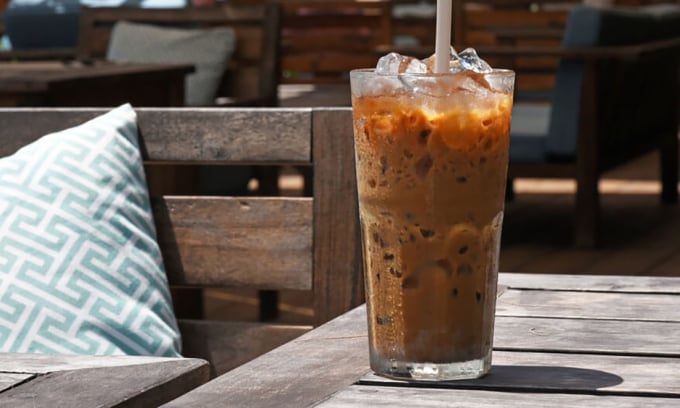
Iced milk coffee or iced brown coffee. Photo: EVC
Iced milk coffee (nau da) is truly the most precious drink in the world of Vietnamese coffee. This traditional drink uses ground coffee, brewed with a filter, pours in boiling water and waits for the coffee drops to slowly drip down through the filter, below the cup there is already condensed milk and ice is added last after mixing the coffee and milk. The blend of flavors, the bitterness of coffee and the sweetness of milk makes iced milk coffee impressive to those addicted to this drink.
Originating in the bustling streets of Ho Chi Minh City, this iconic beverage has found its way from roadside stalls to luxurious 5-star restaurants. Today, iced milk coffee is a staple in Vietnamese restaurants around the world, an indispensable accompaniment, and a culinary heritage of Vietnam.
Bac Xiu: Coffee blends three cultures
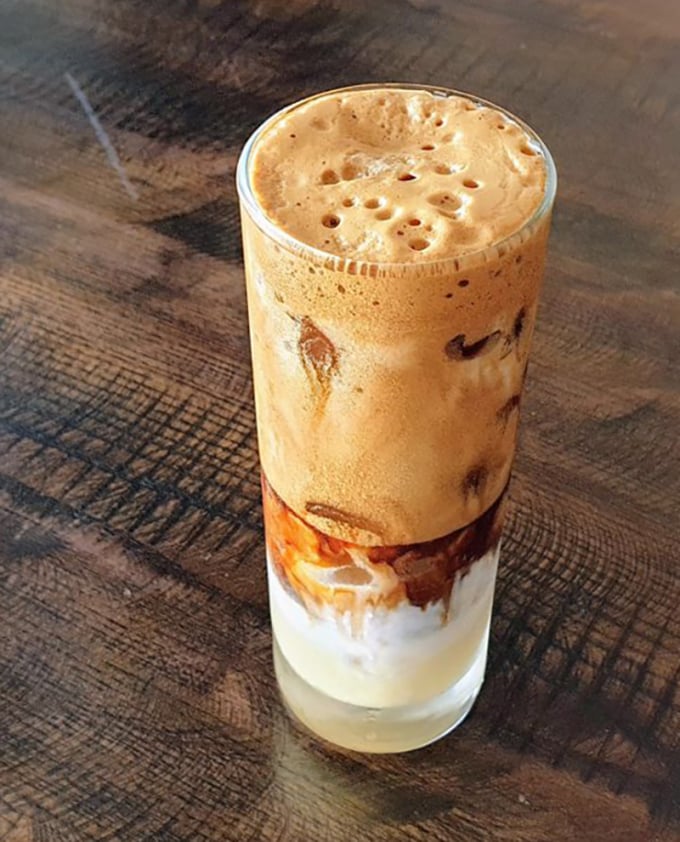
Silver. Photo: KBT
Invented by the Chinese in Saigon in the early 20th century, Bac Xiu is a testament to Saigon's rich culture and cuisine, a drink influenced by Chinese, Vietnamese and French styles.
Many people think that the strong bitter taste of black coffee and milk coffee is a challenge for women and children who are not used to it, so the Chinese have come up with a more creative version - Bac Xiu. They changed the traditional iced milk coffee recipe, adjusting the ratio of coffee and milk to make it more delicious (increase milk, reduce coffee). Bac Xiu is a successful combination when it balances sugar, milk and coffee.
Egg Coffee: Hanoi Coffee Masterpiece
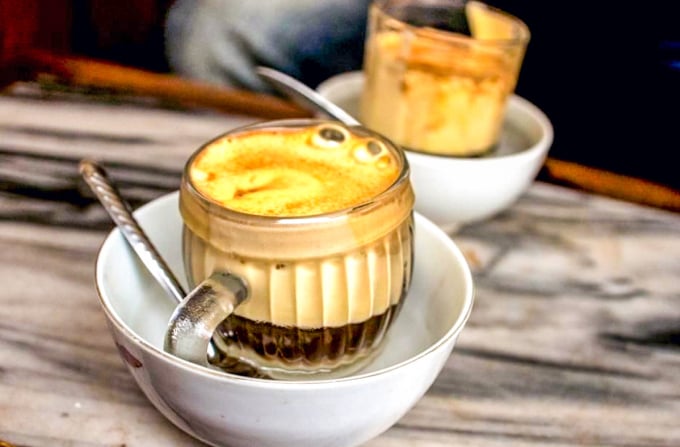
Egg coffee. Photo: Le Lien
Egg coffee can be considered a great invention of the war period. In the 1940s, when the price of sugar and milk skyrocketed, Mr. Nguyen Van Giang, founder of Giang Cafe in Hanoi, used egg yolks, inspired by his experiences working at the Metropole Hotel (Sofitel Legend Metropole Hanoi) combined with cappuccino. This clever substitution created a deep golden cream on the coffee base, intertwining the bitterness and richness of the egg. The finished product was also sweetened by honey.
Served in small cups, Vietnamese egg coffee offers a distinct sensory experience. Egg coffee is kept warm in a bowl of hot water, making the drinker feel comfortable. With the balance of ingredients, egg coffee is a truly seductive drink.
Salt Coffee: The Combination in Coffee
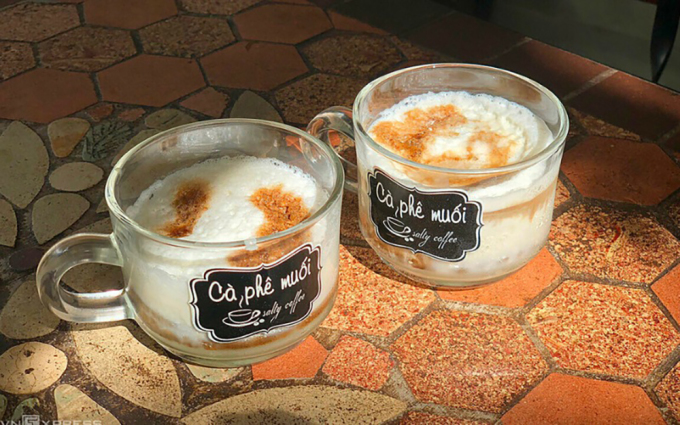
Salt coffee originated from Hue. Photo: Cafe Muoi
As the name suggests, salt coffee is coffee with a salty taste from salt. This drink represents the creative spirit of Vietnamese cuisine in recent years, blending the long-standing coffee tradition with the creativity of the new century. Originating from Hue, salt coffee subtly combines robusta coffee beans with cream and salt. The salty taste neutralizes the bitter and sweet flavors, creating an impressive sense of harmony when enjoyed.
Salted coffee has many layers, condensed milk at the bottom, coffee in the middle and cream on top. Salted coffee is a unique culinary adventure. When mixed together, the saltiness will highlight the rich flavor of the coffee while softening the bitterness and enhancing the sweet, creamy taste of the milk.
Coconut Coffee: A Tropical Tradition
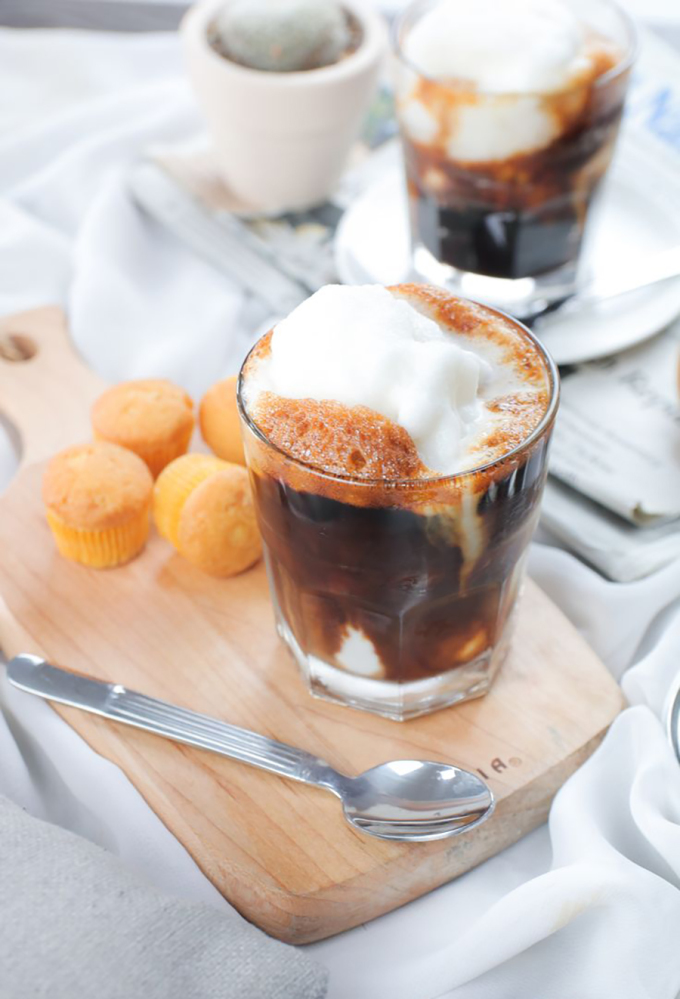
Coconut coffee. Photo: Mina
This drink represents the Vietnamese love for tropical fruits. With a clever recipe, the aroma and bitterness of pure coffee, the sweet and fatty taste of coconut milk and condensed milk create a symphony of flavors that captivate the senses.
A cup of coconut coffee requires a meticulous preparation process. First, coconut milk is mixed with condensed milk and ice cubes until smooth. Then, the black coffee is shaken vigorously in a bottle until a light brown foam forms on the surface. Finally, the coffee is poured into a glass cup, slowly pouring in the concentrated coconut milk mixture, creating a drink with a distinct flavor and visual appeal. Coconut coffee transports the drinker to a tropical paradise.
Cold brew fruit coffee: Modern cup of coffee

Cold brew fruit. Photo: Shincafe
Having only appeared for about a decade, cold brew fruit coffee has brought a new breeze to Vietnamese coffee culture, quickly winning the hearts of people in bustling big cities like Hanoi and Ho Chi Minh City.
This drink uses the traditional cold brew method, allowing Arabica coffee beans to blend with fruits or fruit juices such as orange, lychee, apricot, taking the coffee drinking experience to a new level. Whether it is the zesty taste of orange, the strange sweetness of lychee or the sourness of apricot, each variation brings a unique and invigorating taste experience to the drinker and dispels the tropical heat.
Tam Anh (according to Michelin Guide )
Source link
























![[Photo] National Assembly Chairman Tran Thanh Man visits Vietnamese Heroic Mother Ta Thi Tran](https://vphoto.vietnam.vn/thumb/1200x675/vietnam/resource/IMAGE/2025/7/20/765c0bd057dd44ad83ab89fe0255b783)







































































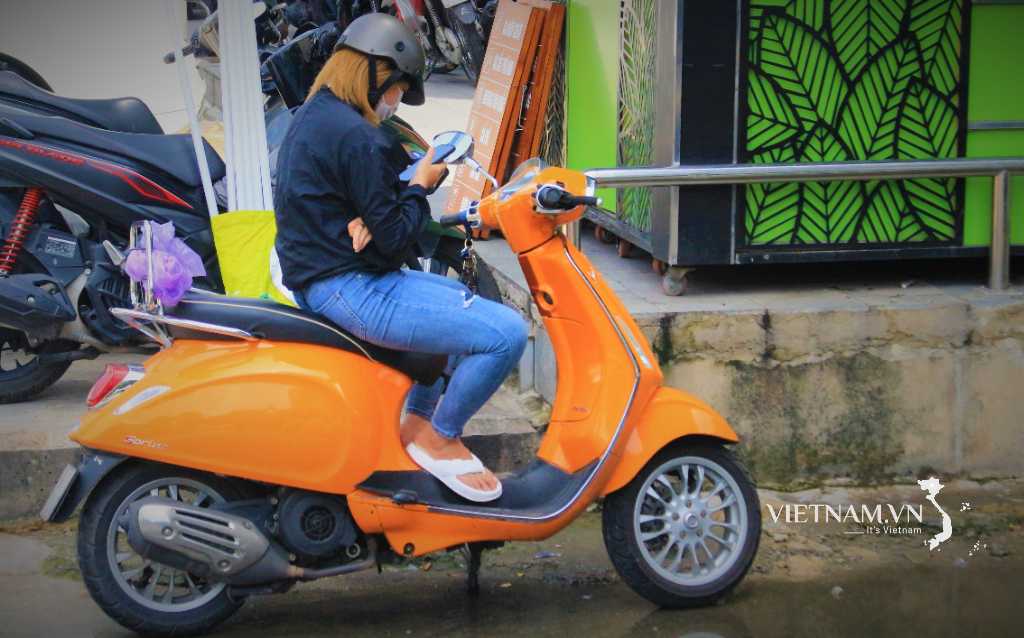

Comment (0)